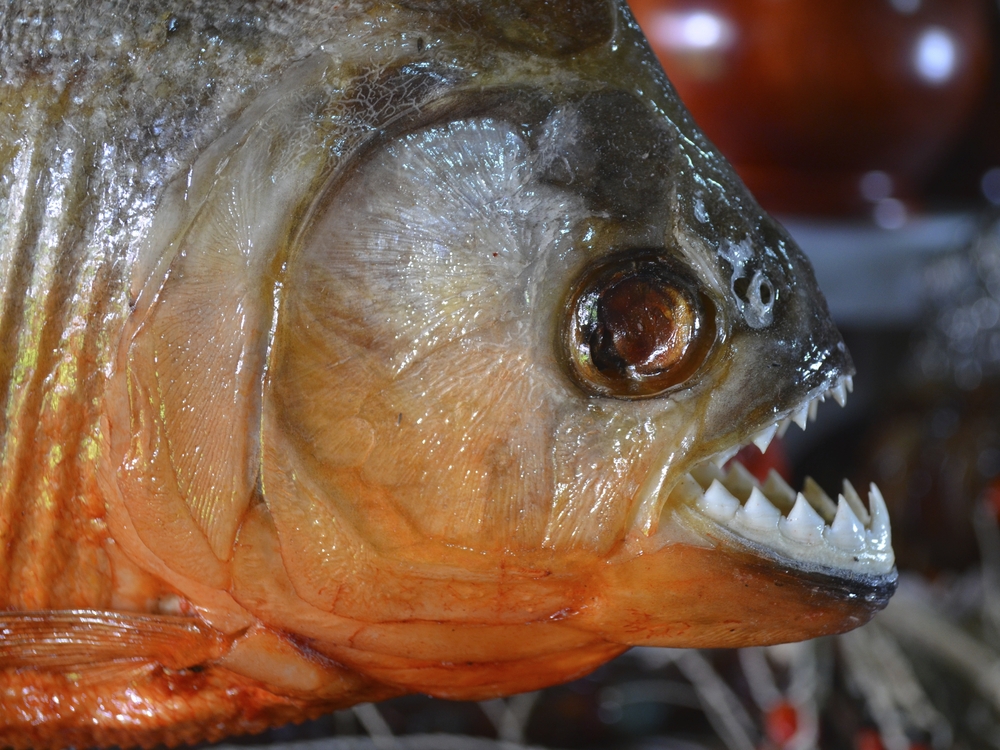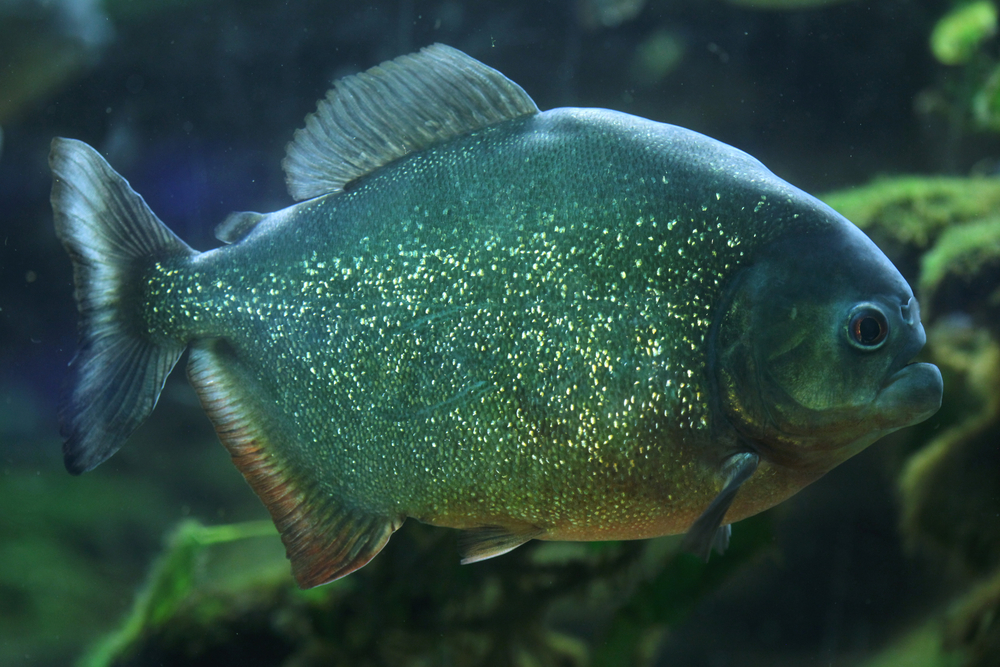Facts About Piranhas

Piranhas are South American fish with razor-sharp teeth and a reputation for feeding frenzies. In fact, piranha means "tooth fish" in the Brazilian language of the Tupi people. However, not all piranha species have a taste for blood; some are vegetarian.
Many different fish are called "piranha," but the number of species is a matter of debate, according to Piranha-Info. "New unidentified species, regional varieties and color forms are discovered, and new and/or updated research data … is published on a fairly regular basis," the website said. Based on current data, there are between 40 and 60 different species of piranha in 12 different scientific families. Two species, Pygocentrus and Serrasalmus, are popular as aquarium fish, according to Piranha-Info. The most commonly known species is Pygocentrus natterei, the red-bellied piranha.
Size
Most piranhas don't get any bigger than 2 feet (60 centimeters) long. For example, the red-bellied piranha and the piraya piranha grow to about 20 inches (51 cm) long, while the black spot piranha grows to about 11 inches (28 cm), according to FishBase.
Habitat
All piranhas live in South America in rivers and lakes, and 20 different species are found in the Amazon River, according to Encyclopedia Britannica.
Some piranhas have been found around the world, but these are thought to be pets that were released into waterways. In some U.S. states, it is illegal to transport, purchase, possess or sell piranhas; other states require permits, according to the Oregon Piranha Exotic Fish Exhibit (OPEFE).
Habits
Piranhas live in groups called a shoal. It is a popular belief that these fish travel in groups so that they can overwhelm prey in a choreographed feeding frenzy. Scientists, however, think they travel together as a form of protection from predators, according to National Geographic. That's not to say that frenzies never occur. When threatened, the shoal will group together with other shoals to take down the predator.
Diet
Most piranhas get a bad rap as terrifying predators that will tear to shreds any flesh that dares dip into its waters. This actually isn't true. Some piranhas are omnivorous and eat more seeds than meat, according to Smithsonian magazine. Some species are vegetarian. A species discovered in 2013, Tometes camunani, for example, lives on river weeds, according to Smithsonian. Others species eat shrimp, crustaceans, worms, carrion and other fish. Attacks on humans are very rare.
The red-bellied piranha is considered one of the more dangerous and aggressive species of piranha, according to the Animal Diversity Web. Generally, when red-bellied piranhas are feeding normally, the fish will spread out, and a scout will signal when a food source is found. When alerted, piranhas are very orderly. Some of the fish will take a bite and then move aside so another fish can take a bite. Just one red-bellied piranha can eat around 2.46 grams per day, or around one-eighth its body mass, according to the Smithsonian.
Wimpel piranhas (Catoprion mento) are very sneaky. They have been observed swimming very quickly toward a target and biting hard as they collide. They will nip bits of fins and scales from other fishes to survive, according to Seriously Fish.

Offspring
Female piranhas lay thousands of eggs at a time in the sand below the water source where they live. The red-bellied piranha female, for example, lays her eggs in a nest that is dug by her mate.
After the male fertilizes the eggs, they attach to plants at the bottom of the water source and hatch within just a few days. Piranhas live up to eight years.
Classification/taxonomy
Here is the taxonomy information for the red-bellied piranha and its cousins, according to the Integrated Taxonomic Information System (ITIS) and Piranha-Info:
Kingdom: Animalia Subkingdom: Bilateria Infrakingdom: Deuterostomia Phylum: Chordata Subphylum: Vertebrata Infraphylum: Gnathostomata Superclass: Osteichthyes Class: Actinopterygii Subclass: Neopterygii Infraclass: Teleostei Superorder: Ostariophysi Order: Characiformes Family: Caricacidae Genus: Pygocentrus Species:
- Pygocentrus cariba — (Cariba piranha, black spot piranha, black shoulder piranha, Orinoco piranha, black eared piranha)
- Pygocentrus natterei — (red-bellied piranha, red-breasted piranha, red piranha, common piranha)
- Pygocentrus palometa — recognized, but may be a nomen dubium (dubious name). The species was named in 1850, but no specimens have ever been found.
- Pygocentrus piraya — (piraya, piraya piranha, black-tailed piranha, San Francisco piranha, king emperor piranha)
Conservation status
The piranha's conservation status has not been assessed by the International Union for Conservation of Nature. They are not currently considered endangered.
Other facts
Red-bellied piranhas bark to warn predators to leave them alone.
The piranha's top and bottom teeth work together like scissors to cut up food. They lose and regrow teeth, much like sharks.
Theodore Roosevelt spread a lot of scary information about these fish in his book, "Through the Brazilian Wilderness," about his travels to South America in 1913.
Piranhas have very strong jaws for clamping down on prey. The black piranha has the strongest bite force recorded for bony fish, according to this 2012 study by scientist Justin R. Grubich and his team.
Additional resources
Sign up for the Live Science daily newsletter now
Get the world’s most fascinating discoveries delivered straight to your inbox.











